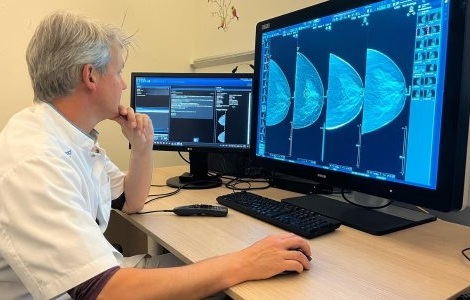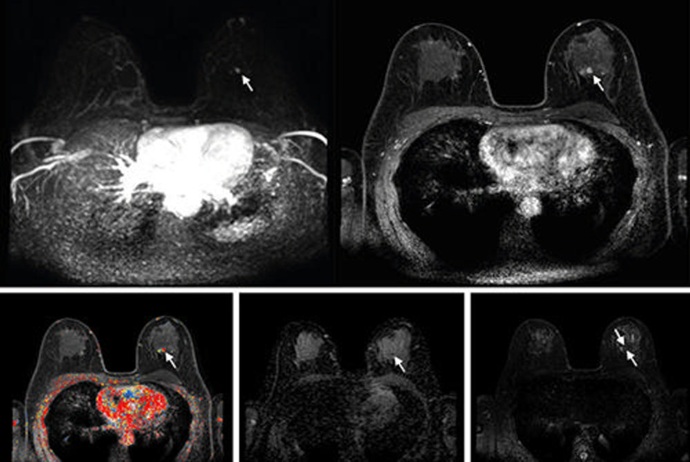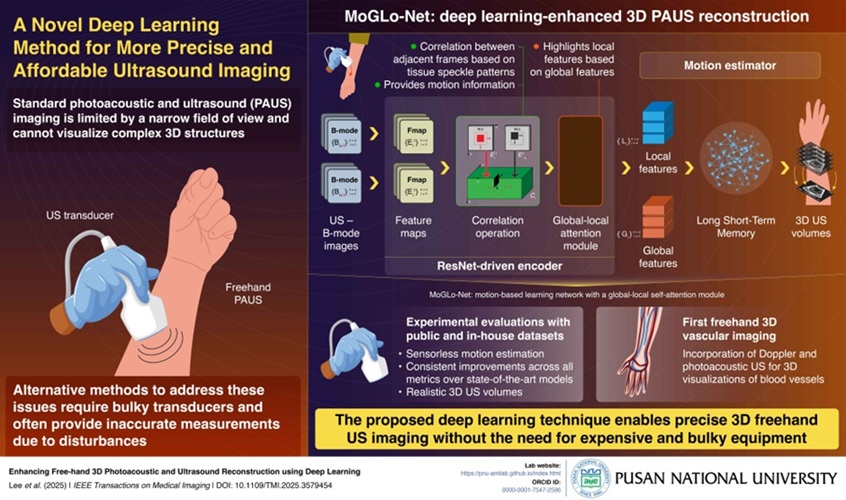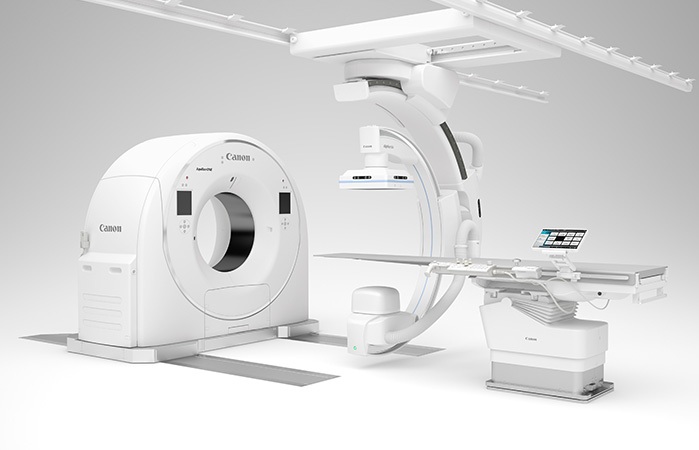Flash RT Could Deliver Radiation Dosage Within One Second
|
By MedImaging International staff writers Posted on 21 Jan 2020 |
A new study details how proton radiation can be used to theoretically give a cancer patient their entire course of radiotherapy (RT) in one rapid treatment.
Developed by researchers at the University of Pennsylvania (Penn; Philadelphia, USA), ultrahigh-dose-rate (FLASH) proton RT can deliver an entire radiation dose in an extremely short time span via double scattered protons and computed tomography (CT) guidance. Using a mouse model of pancreatic tumors, the effect of FLASH RT versus standard dose rate RT on both tumors and normal tissue was measured using pancreatic flank tumors in syngeneic C57BL/6J mice, with analysis of fibrosis and stem cell repopulation in the small intestine after abdominal irradiation.
The results showed that whole abdominal FLASH proton RT at 15 Gy significantly reduced the loss of proliferating cells in intestinal crypts, compared with standard proton RT. Studies with local intestinal irradiation at 18 Gy revealed a reduction to near baseline levels of intestinal fibrosis, compared with standard proton RT. The researchers also found that FLASH proton RT spared healthy tissue. The study was published in the February 2020 issue of the International Journal of Radiation Oncology, Biology, and Physics.
“We've been able to develop specialized systems to generate FLASH doses, demonstrate that we can control the proton beam, and perform a large number of experiments to help us understand the implications of FLASH radiation that we simply could not have done with a more traditional research setup,” said co-senior author James Metz, MD, director of the Penn Roberts Proton Therapy Center. “Using this system, we found that FLASH proton RT decreases acute cell loss and late fibrosis after whole-abdomen and focal intestinal RT, whereas tumor growth inhibition is preserved between the two modalities.”
FLASH RT involves the ultra-fast delivery of radiation at dose rates several orders of magnitude greater than those currently in routine clinical practice. In order to eradicate tumors, all cancerous cells must be killed, with normal tissue being spared from radiation damage as much as possible. Ultra-fast dose rates allow normal tissue tolerance levels to be exceeded, at least in animal models, with a greater probability of tumor control and little normal tissue damage. One mechanism suggested is that FLASH consumes all available oxygen and liberates significantly more electrons, resulting in many more ionization events than at conventional dose rates.
Related Links:
University of Pennsylvania
Developed by researchers at the University of Pennsylvania (Penn; Philadelphia, USA), ultrahigh-dose-rate (FLASH) proton RT can deliver an entire radiation dose in an extremely short time span via double scattered protons and computed tomography (CT) guidance. Using a mouse model of pancreatic tumors, the effect of FLASH RT versus standard dose rate RT on both tumors and normal tissue was measured using pancreatic flank tumors in syngeneic C57BL/6J mice, with analysis of fibrosis and stem cell repopulation in the small intestine after abdominal irradiation.
The results showed that whole abdominal FLASH proton RT at 15 Gy significantly reduced the loss of proliferating cells in intestinal crypts, compared with standard proton RT. Studies with local intestinal irradiation at 18 Gy revealed a reduction to near baseline levels of intestinal fibrosis, compared with standard proton RT. The researchers also found that FLASH proton RT spared healthy tissue. The study was published in the February 2020 issue of the International Journal of Radiation Oncology, Biology, and Physics.
“We've been able to develop specialized systems to generate FLASH doses, demonstrate that we can control the proton beam, and perform a large number of experiments to help us understand the implications of FLASH radiation that we simply could not have done with a more traditional research setup,” said co-senior author James Metz, MD, director of the Penn Roberts Proton Therapy Center. “Using this system, we found that FLASH proton RT decreases acute cell loss and late fibrosis after whole-abdomen and focal intestinal RT, whereas tumor growth inhibition is preserved between the two modalities.”
FLASH RT involves the ultra-fast delivery of radiation at dose rates several orders of magnitude greater than those currently in routine clinical practice. In order to eradicate tumors, all cancerous cells must be killed, with normal tissue being spared from radiation damage as much as possible. Ultra-fast dose rates allow normal tissue tolerance levels to be exceeded, at least in animal models, with a greater probability of tumor control and little normal tissue damage. One mechanism suggested is that FLASH consumes all available oxygen and liberates significantly more electrons, resulting in many more ionization events than at conventional dose rates.
Related Links:
University of Pennsylvania
Latest Nuclear Medicine News
- New Imaging Solution Improves Survival for Patients with Recurring Prostate Cancer
- PET Tracer Enables Same-Day Imaging of Triple-Negative Breast and Urothelial Cancers
- New Camera Sees Inside Human Body for Enhanced Scanning and Diagnosis
- Novel Bacteria-Specific PET Imaging Approach Detects Hard-To-Diagnose Lung Infections
- New Imaging Approach Could Reduce Need for Biopsies to Monitor Prostate Cancer
- Novel Radiolabeled Antibody Improves Diagnosis and Treatment of Solid Tumors
- Novel PET Imaging Approach Offers Never-Before-Seen View of Neuroinflammation
- Novel Radiotracer Identifies Biomarker for Triple-Negative Breast Cancer
- Innovative PET Imaging Technique to Help Diagnose Neurodegeneration
- New Molecular Imaging Test to Improve Lung Cancer Diagnosis
- Novel PET Technique Visualizes Spinal Cord Injuries to Predict Recovery
- Next-Gen Tau Radiotracers Outperform FDA-Approved Imaging Agents in Detecting Alzheimer’s
- Breakthrough Method Detects Inflammation in Body Using PET Imaging
- Advanced Imaging Reveals Hidden Metastases in High-Risk Prostate Cancer Patients
- Combining Advanced Imaging Technologies Offers Breakthrough in Glioblastoma Treatment
- New Molecular Imaging Agent Accurately Identifies Crucial Cancer Biomarker
Channels
Radiography
view channel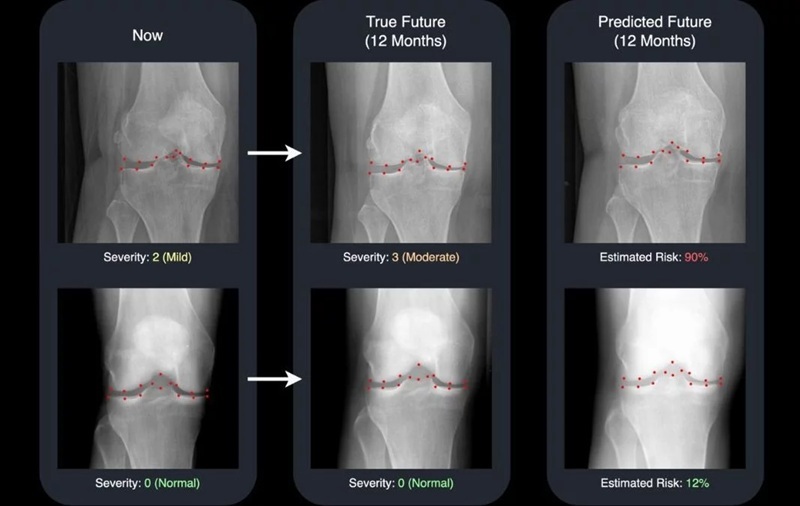
AI Generates Future Knee X-Rays to Predict Osteoarthritis Progression Risk
Osteoarthritis, a degenerative joint disease affecting over 500 million people worldwide, is the leading cause of disability among older adults. Current diagnostic tools allow doctors to assess damage... Read more
AI Algorithm Uses Mammograms to Accurately Predict Cardiovascular Risk in Women
Cardiovascular disease remains the leading cause of death in women worldwide, responsible for about nine million deaths annually. Despite this burden, symptoms and risk factors are often under-recognized... Read moreMRI
view channel
AI-Assisted Model Enhances MRI Heart Scans
A cardiac MRI can reveal critical information about the heart’s function and any abnormalities, but traditional scans take 30 to 90 minutes and often suffer from poor image quality due to patient movement.... Read more
AI Model Outperforms Doctors at Identifying Patients Most At-Risk of Cardiac Arrest
Hypertrophic cardiomyopathy is one of the most common inherited heart conditions and a leading cause of sudden cardiac death in young individuals and athletes. While many patients live normal lives, some... Read moreUltrasound
view channel
Ultrasound Probe Images Entire Organ in 4D
Disorders of blood microcirculation can have devastating effects, contributing to heart failure, kidney failure, and chronic diseases. However, existing imaging technologies cannot visualize the full network... Read more
Disposable Ultrasound Patch Performs Better Than Existing Devices
Wearable ultrasound devices are widely used in diagnostics, rehabilitation monitoring, and telemedicine, yet most existing models rely on lead-based piezoelectric ceramics that pose health and environmental risks.... Read moreGeneral/Advanced Imaging
view channel
AI Tool Improves Medical Imaging Process by 90%
Accurately labeling different regions within medical scans, a process known as medical image segmentation, is critical for diagnosis, surgery planning, and research. Traditionally, this has been a manual... Read more
New Ultrasmall, Light-Sensitive Nanoparticles Could Serve as Contrast Agents
Medical imaging technologies face ongoing challenges in capturing accurate, detailed views of internal processes, especially in conditions like cancer, where tracking disease development and treatment... Read more
AI Algorithm Accurately Predicts Pancreatic Cancer Metastasis Using Routine CT Images
In pancreatic cancer, detecting whether the disease has spread to other organs is critical for determining whether surgery is appropriate. If metastasis is present, surgery is not recommended, yet current... Read moreImaging IT
view channel
New Google Cloud Medical Imaging Suite Makes Imaging Healthcare Data More Accessible
Medical imaging is a critical tool used to diagnose patients, and there are billions of medical images scanned globally each year. Imaging data accounts for about 90% of all healthcare data1 and, until... Read more
Global AI in Medical Diagnostics Market to Be Driven by Demand for Image Recognition in Radiology
The global artificial intelligence (AI) in medical diagnostics market is expanding with early disease detection being one of its key applications and image recognition becoming a compelling consumer proposition... Read moreIndustry News
view channel
GE HealthCare and NVIDIA Collaboration to Reimagine Diagnostic Imaging
GE HealthCare (Chicago, IL, USA) has entered into a collaboration with NVIDIA (Santa Clara, CA, USA), expanding the existing relationship between the two companies to focus on pioneering innovation in... Read more
Patient-Specific 3D-Printed Phantoms Transform CT Imaging
New research has highlighted how anatomically precise, patient-specific 3D-printed phantoms are proving to be scalable, cost-effective, and efficient tools in the development of new CT scan algorithms... Read more
Siemens and Sectra Collaborate on Enhancing Radiology Workflows
Siemens Healthineers (Forchheim, Germany) and Sectra (Linköping, Sweden) have entered into a collaboration aimed at enhancing radiologists' diagnostic capabilities and, in turn, improving patient care... Read more











